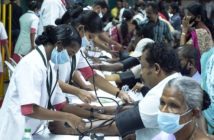The Pune-Mumbai Expressway, a vital corridor connecting two major cities in Maharashtra, has been experiencing significant traffic congestion, especially during long weekends and peak travel times. Recent reports indicate that this issue has led to substantial delays, with vehicles stuck for hours on end. For instance, traffic jams near the Somatane and Urse toll plazas have persisted for up to six hours, causing major frustration among commuters.
Causes of Traffic Congestion
- Holiday Rush: The traffic congestion is often exacerbated during long weekends when there is a surge in the number of travelers. Many choose to take trips to nearby destinations, leading to an overwhelming volume of vehicles on the road. This was evident in the recent rush following the long weekend, which saw vehicles piling up at toll booths and key congestion points like Lonavala and Khalapur.
- Toll Plazas and Narrow Roads: The expressway’s design includes several toll plazas that act as bottlenecks. Even though the toll collection process has been streamlined with electronic toll collection (ETC) systems, the sheer volume of vehicles still leads to slowdowns. Additionally, narrow roads and limited lanes in certain sections further restrict traffic flow.
- Encroachments and Unauthorized Vendors: Service roads, which are supposed to provide relief during heavy traffic, are often congested due to unauthorized vendors. These vendors set up stalls along the service roads, narrowing the pathways and making it difficult for vehicles to navigate.
Proposed Solutions
- Expansion of Toll Plazas: To address the issue of bottlenecks at toll plazas, the authorities could consider expanding these facilities or increasing the number of lanes dedicated to ETC. This would help in managing the flow of vehicles more efficiently, reducing waiting times.
- Better Traffic Management: Implementing advanced traffic management systems that use real-time data to monitor and control the flow of vehicles can help in anticipating congestion and taking proactive measures. This can include variable message signs that provide real-time updates to drivers and suggest alternative routes.
- Strict Regulation of Service Roads: Authorities need to enforce stricter regulations on service roads to prevent unauthorized vendors from setting up stalls. Clearing these encroachments would ensure that service roads remain clear and usable during peak traffic times, offering a genuine alternative route.
- Promotion of Public Transport: Encouraging the use of public transport for long-distance travel between Pune and Mumbai can significantly reduce the number of private vehicles on the expressway. Initiatives like increased frequency of buses and trains, along with comfortable and affordable options, could help in achieving this goal.
- Awareness Campaigns: Conducting awareness campaigns to educate drivers about the importance of maintaining lane discipline, avoiding unnecessary overtaking, and using alternative routes can also help in reducing traffic congestion.
By implementing these solutions, it is possible to alleviate the heavy traffic on the Pune-Mumbai Expressway and ensure a smoother travel experience for all commuters.






